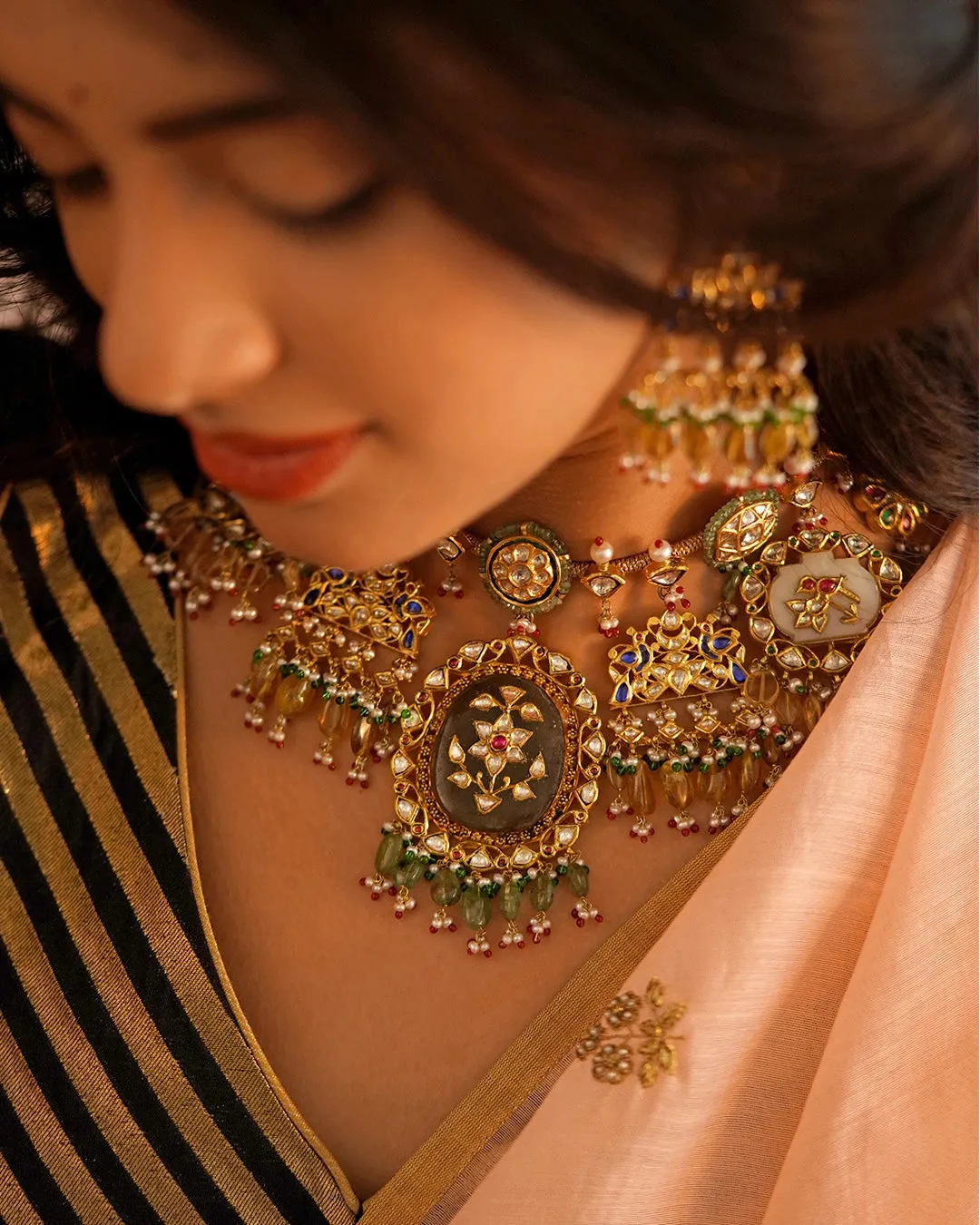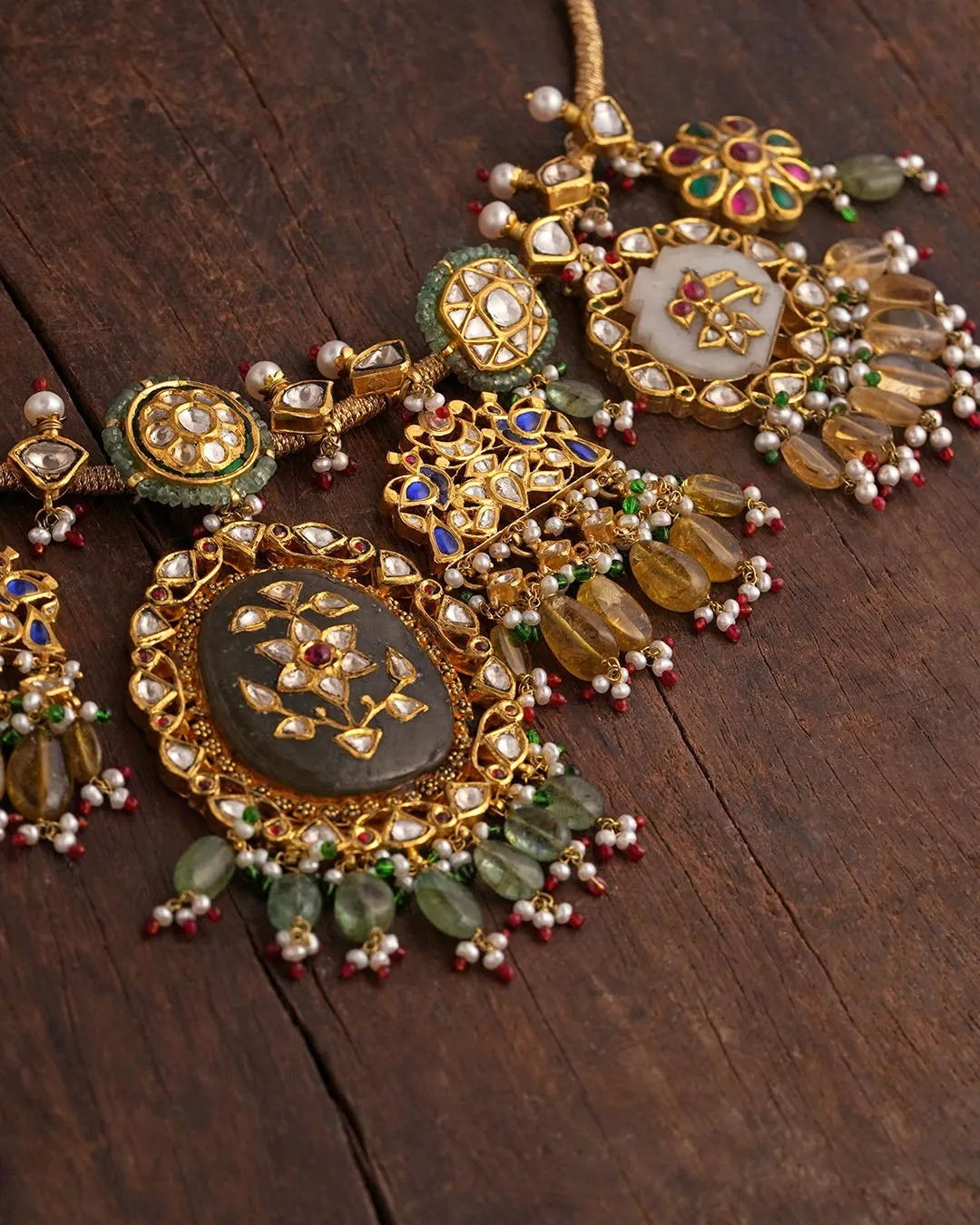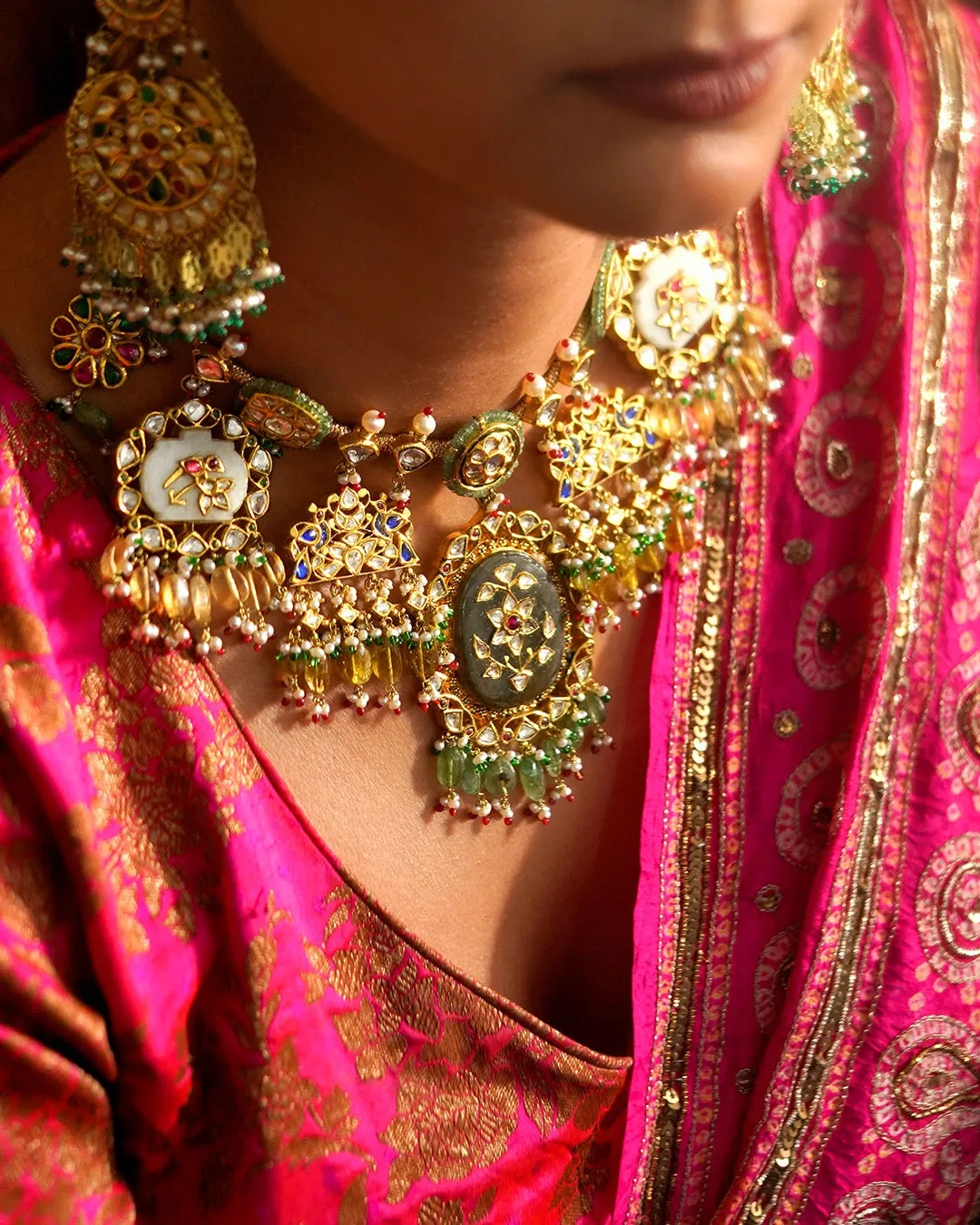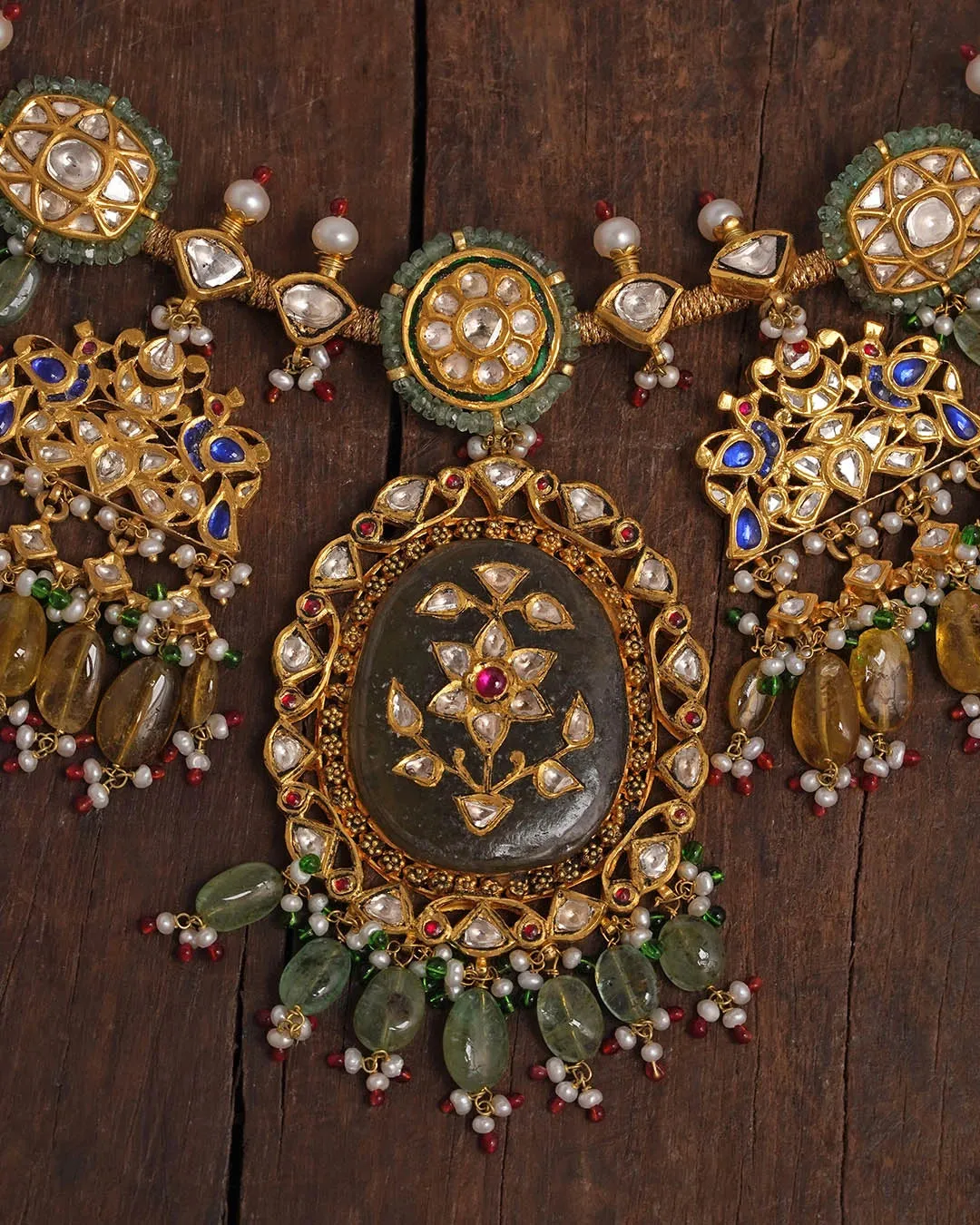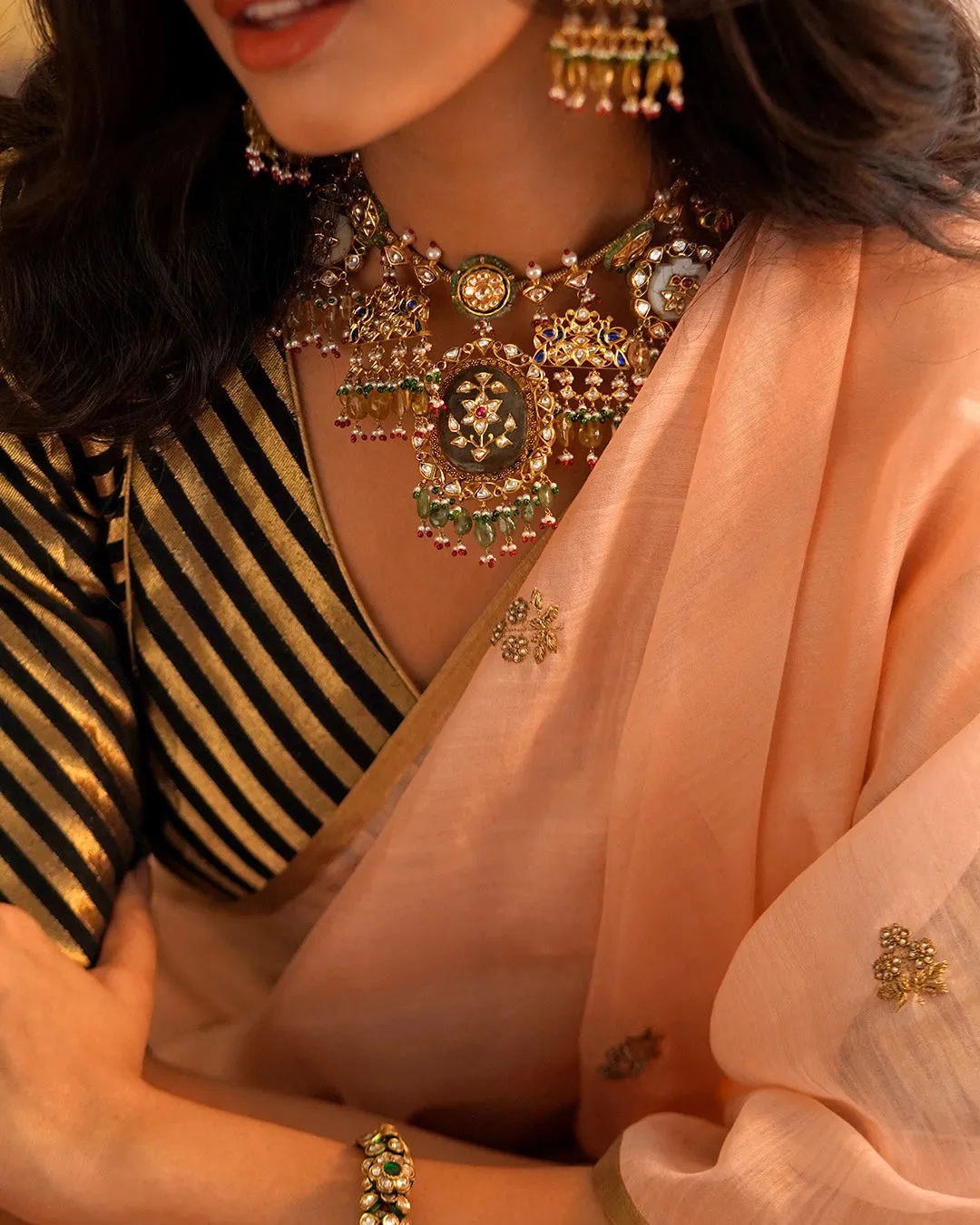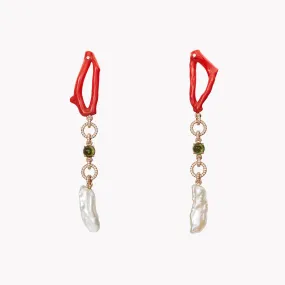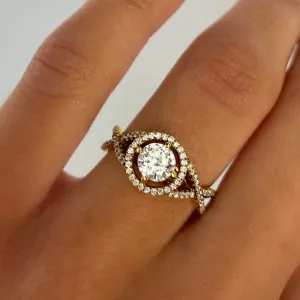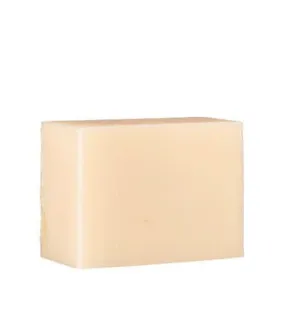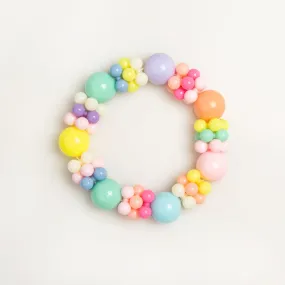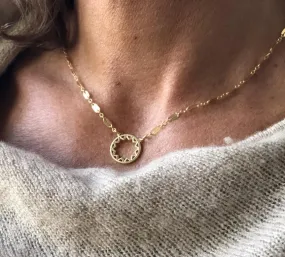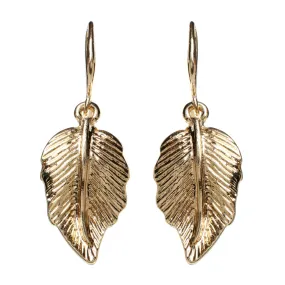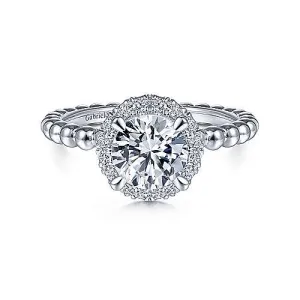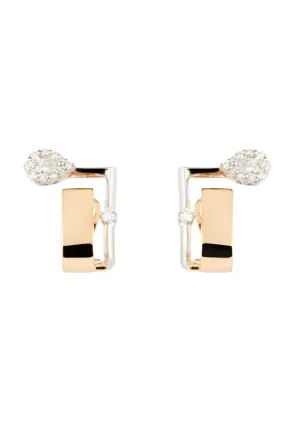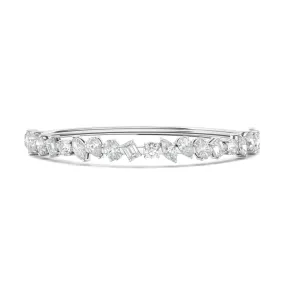Product Details
+Indian gold necklace consisting of seven pendants strung on a traditional cord, alternated withkundan-setpolki units. In the center is a stone inlaid with a flowering tree of life(jeevan vriksh)dressed in polki using the traditionaljadaitechnique and bordered withkundan-setdiamonds. On either side are pairs of pendants decorated with birds perched aroundkundan-setdiamonds, followed by identical nephrite pendants ornamented with gem-set birds perched on a flower. The finials, crafted in gold depict two rosettes set with red and green stones.
All the pendants are bordered with fungar—small gold cups to which pearls, with red beads, are wired, and are strung on the cord usingpatwa work, the same technique using which the cord is also made. Emerald and tourmaline drops ending with seed pearls and red and green enameled beads are suspended from the pendants. The overallpiraiemployed in this gold and polki necklace takes about 10 man hours.
The Tree of Life is an ancient motif, which has different significances in different cultures. In some texts, it's the cosmic tree that supports the Universe, and thus, life. And in some, it represents the tree that grew in the middle of the Garden of Eden and bore 12 fruits that, when eaten, gave their consumers eternal life.
All the pendants are bordered with fungar—small gold cups to which pearls, with red beads, are wired, and are strung on the cord usingpatwa work, the same technique using which the cord is also made. Emerald and tourmaline drops ending with seed pearls and red and green enameled beads are suspended from the pendants. The overallpiraiemployed in this gold and polki necklace takes about 10 man hours.
The Tree of Life is an ancient motif, which has different significances in different cultures. In some texts, it's the cosmic tree that supports the Universe, and thus, life. And in some, it represents the tree that grew in the middle of the Garden of Eden and bore 12 fruits that, when eaten, gave their consumers eternal life.




